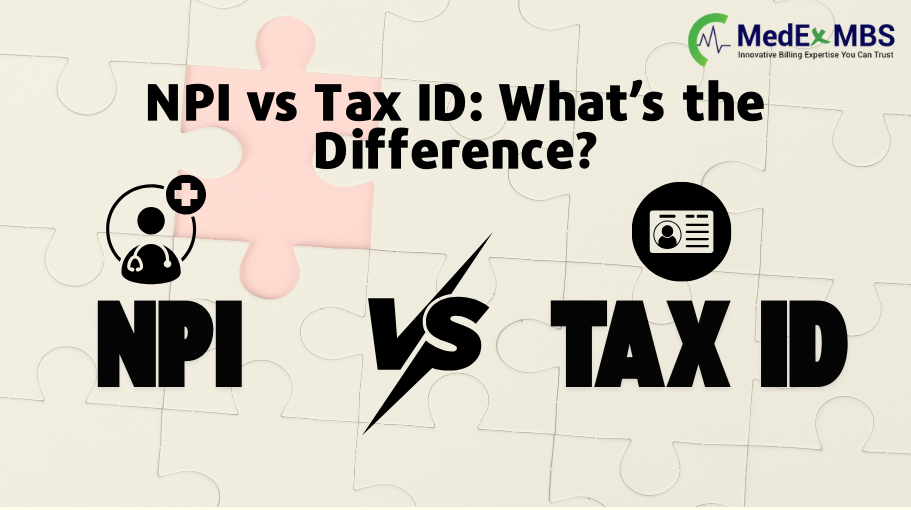Maximizing Reimbursement for New Patient Visits: CPT Code 99203

The 99203 code pertains to outpatient visits for new patients that necessitate a comprehensive history, examination, and low complexity decision-making. Correct application of this code will facilitate payment and prevent claims-related issues. This article will elucidate the components, time requirements, and frequent errors associated with the 99203 code, enabling you to utilize it accurately. Quick Hits The 99203 code is designated for new patient outpatient visits that demand a detailed medical history, examination, and low complexity medical decision-making for billing and compliance purposes. Accurate documentation of the essential components: patient history, physical examination, and medical decision-making is imperative for the application of CPT code 99203 and to ensure payment. Remaining informed about coding guidelines, reimbursement rates, and the application of modifiers such as 25 is crucial for precise billing and enhancing patient care and satisfaction. What is CPT Code 99203 CPT code 99203 is applicable for outpatient visits involving new patients that require a comprehensive medical history, examination, and low complexity medical decision-making. This code is relevant when the patient has not consulted the physician or another physician of the same specialty and group within the past three years, including other outpatient visit circumstances. This aspect is vital for coding and billing as it guarantees that the services rendered comply with the American Medical Association (AMA) standards. For the 99203 code, the necessary care components include a medically appropriate history, a detailed examination, and low complexity medical decision-making. These elements are essential to validate the code and receive payment for the services rendered. Grasping these components is crucial for coding and billing services and ensuring a seamless reimbursement process. The 99203 code serves as a fundamental element of medical coding that underpins the documentation and billing of initial patient visits. Proper utilization of this code guarantees coding compliance and enhances overall patient care by maintaining clear medical records. 99203 Components To bill under 99203, healthcare providers are required to document the following components. First, the patient’s medical history must be recorded, which includes: The patient’s chief complaint History of present illness Review of systems Past medical, family, and social history This serves as the foundation for understanding the patient’s current health status and potential risk factors. Next, a physical examination is necessary. It should be comprehensive, covering multiple organ systems, or a detailed examination of a single organ system if required. This examination provides a holistic view of the patient and aids in identifying any abnormalities that may require further investigation or treatment. The medical decision-making process for 99203 is classified as low complexity. This indicates that the decisions involved are not intricate. The provider must assess the patient, contemplate treatment options, and make decisions that are less complex than those associated with higher-level codes. Documenting this decision-making process is crucial as it substantiates the use of 99203 and the associated billing. Time Considerations for 99203 Time is an important factor in billing for 99203. Patient visits billed under this code generally last between 30 to 44 minutes. This duration encompasses face-to-face interaction with the patient as well as any additional time spent on the patient’s case, such as reviewing medical records or coordinating care with other providers. Accurate documentation of time is essential to demonstrate the level of care provided during 99203 visits. The documentation should clearly indicate the amount of time spent with the patient and the services rendered. This ensures that the billing accurately reflects the time and effort invested in patient care. Furthermore, precise time tracking supports the level of service billed and minimizes the risk of audits and denied claims. It reinforces the provider’s request for payment and guarantees that they receive compensation for the care they have delivered. 99203 vs 99204 vs 99205 Distinguishing between 99203 and the other new patient codes, 99204 and 99205, is essential for accurate billing and coding. 99203 pertains to low complexity, 99204 to moderate complexity, and 99205 to high complexity. Recognizing these distinctions aids in selecting the appropriate code for the patient visit. The duration of the encounter also differs among the codes. For instance, 99203 requires 30-44 minutes, while 99204 necessitates 45-59 minutes. These time specifications are crucial for selecting the correct code and ensuring that the billing accurately reflects the level of service provided. When selecting a code for billing, providers should take into account the complexity of medical decision-making, the thoroughness of the history and examination, and the time spent with the patient. By doing so, they can guarantee that the chosen code accurately represents the services rendered and facilitates payment. 99203 Documentation Accurate and comprehensive documentation is vital for successful billing of 99203. Providers must ensure that their documentation captures the depth of the history and examination. This encompasses the patient’s chief complaint and the history of the present illness. Additionally, it should include a review of systems and any pertinent past medical, family, and social history. Furthermore, providers should systematically document the medical decision-making process to substantiate the complexity of the patient’s condition. This involves assessing the patient’s status, weighing treatment options, and articulating the rationale for the selected plan of care. Such detailed documentation not only supports the application of 99203 but also safeguards against claim denials. Failure to align documentation with the billed level of service can lead to significant issues, including denied claims and audits. Therefore, providers must adhere to proper documentation practices to ensure their billing is precise and compliant with coding standards. 99203 Errors Billing mistakes are prevalent in the healthcare sector, and the 99203 code is no different. A frequent error involves billing this code for established patients rather than new patients, which may result in audits and penalties. Ensuring that the patient qualifies as a new patient is essential for accurate billing. Another error is the incorrect application of the 99203 code, which can lead to reduced reimbursement and diminished patient satisfaction due to inadequate service quality.
Frequent HCPCS Coding Errors in Radiology Billing and Strategies to Prevent Them

Radiology practices frequently neglect to apply separate charges for essential items, including imaging supplies, contrast dye, and radioactive tracers, as their attention is primarily directed towards the main scans and diagnoses. When personnel fail to bill for these expensive materials, practices experience revenue loss and face the risk of compliance violations. A single mistake in billing for a radioactive tracer can result in costs exceeding $1,000 per study. With Medicare reimbursement rates projected to decrease by approximately 2.9% in 2025, these HCPCS challenges are increasingly significant for radiology professionals. This guide outlines prevalent HCPCS challenges and effective strategies to address them. Why is HCPCS Essential in Radiology Billing? CPT codes document the procedures performed, such as MRI scans, CT studies, or PET scans. In contrast, HCPCS codes account for the materials utilized, such as the $2,000 PET tracer, the $300 gadolinium injection, or specialized catheters. Failing to include these supply codes results in the expensive materials being treated as practice overhead rather than being compensated for. This issue is a common occurrence in radiology. Practices tend to concentrate on the high-cost imaging procedures while disregarding the costly materials that enable those procedures to be performed. The most frequent areas where practices incur revenue losses include: Contrast Agents Each type of contrast requires specific HCPCS codes that depend on its composition and delivery method. Gadolinium-based MRI contrast necessitates different codes compared to iodinated CT contrast. Utilizing generic codes instead of the specific agent codes leads to systematic underpayments. Radiopharmaceuticals PET imaging depends on costly tracers that come with intricate billing regulations. Some codes charge per study dose, irrespective of the millicuries used, while others charge per millicurie administered. This differentiation influences whether you bill for one unit or fifteen units for the same injection. Interventional Supplies Catheters, guidewires, and specialized devices employed during interventional procedures are often eligible for separate billing. Omitting these charges can convert profitable procedures into scenarios where the practice breaks even or incurs losses. Frequent HCPCS Coding Errors in Radiology Billing The following outlines the most common HCPCS errors encountered in radiology billing, along with their respective solutions. Incorrect Units for Radiopharmaceutical Billing Radiopharmaceutical codes adhere to distinct billing regulations that many practices misinterpret, resulting in considerable revenue loss. The Issue Certain codes bill “per study dose, while others bill “per millicurie. Code A9503 encompasses up to 30 millicuries but bills as a single unit, irrespective of the actual quantity utilized. Numerous practices mistakenly bill 15 units when administering 15 millicuries. The Resolution Educate staff to distinguish between “per study dose” and “per millicurie” descriptors. Develop quick reference cards that outline unit rules for frequently used radiopharmaceuticals. Insufficient Documentation for High-Cost Tracers Unlisted tracer codes necessitate comprehensive documentation that many practices neglect, leading to claim denials. The Issue Codes such as A9598 require documentation of the product name, NDC number, dosage, and invoice cost. The absence of any of these elements results in denials. Random audits demand invoice verification, and incomplete records necessitate the repayment of received funds. The Resolution Establish documentation templates for unlisted codes. Mandate the inclusion of invoice copies and complete product information before billing any NOC radiopharmaceutical codes. Billing for Contrast When It Is Already Included Payer bundling regulations differ significantly, confusing regarding when contrast can be billed separately. The Issue Certain payers bundle MRI contrast into procedure payments. Billing it separately breaches contracts and initiates compliance reviews. Each payer has varying bundling rules that are subject to change quarterly. The Resolution Keep up-to-date bundling reference guides for major payers. Review payer updates every quarter and modify billing protocols accordingly for each contract. Insufficient Contrast Documentation Details Inadequate contrast documentation hinders accurate HCPCS coding and leads to systematic revenue loss. The Issue The type and quantity of contrast must be recorded in the technique section prior to the addition of supply codes. Incomplete information regarding specific contrast agents, volumes given, or methods of delivery hinders precise HCPCS code selection and reimbursement. The Resolution Mandate that technologists record the precise type of contrast, volume, and method of administration. Develop standardized templates for documenting contrast in imaging reports. Prior Authorization Shortcomings for High-Cost Agents High-priced radiopharmaceuticals and contrast agents frequently necessitate prior authorization, which practices often neglect to secure. The Issue Advanced PET tracers, which cost between $3,000 and $5,000, require pre-approval before administration. The absence of authorization results in automatic denials, irrespective of medical necessity. Emergency studies exacerbate this issue when time constraints prevent authorization requests. The Resolution Establish pre-authorization tracking systems for high-cost agents. Confirm coverage before scheduling and maintain databases for authorizations with tracking for expiration. Billing System Mapping Mistakes Chargemaster systems frequently misclassify procedures under incorrect HCPCS codes, leading to systematic billing inaccuracies. The Issue Technical personnel document bilateral imaging on charge tickets, yet billing systems assign unilateral procedure codes. Therapeutic infusions are incorrectly categorized under hydration codes. These mapping inaccuracies result in consistent underbilling across numerous claims. The Resolution Perform quarterly audits of the chargemaster with both clinical and billing personnel. Cross-verify charge ticket descriptions against the actual HCPCS codes in your billing system. When discrepancies are identified, promptly update mappings and utilize test claims to validate corrections before implementation. Volume Calculation Errors Inaccurate dosage calculations result in incorrect unit billing and substantial revenue discrepancies. The Issue Per-milliliter codes necessitate accurate volume calculations. Billing practices that charge per vial rather than the actual milliliters administered overlook potential revenue. Additionally, the requirements for waste documentation further complicate the precise determination of units for costly agents. The Resolution Educate staff on the differences between per-unit and per-volume billing. Establish protocols for verifying dose calculations. Ensure proper documentation of waste for high-cost radiopharmaceuticals. Incomplete Invoice Records for Audits The absence of invoice documentation poses a risk during payer audits and
NPI vs. Tax ID: What’s the Difference?

In the realm of medical billing, identifying providers is crucial for the accurate submission of claims and the proper reimbursement process. Among the key identifiers utilized in healthcare are the NPI (National Provider Identifier) and the Tax ID (TIN or EIN: Employer Identification Number). Although these identifiers are frequently referenced together, they fulfill distinctly different functions. If you are in the process of establishing a new practice, billing for claims, or engaged in healthcare administration, comprehending the operation of these two numbers and their combined usage can prevent you from experiencing expensive delays or claim denials. Let us clarify this further. What is an NPI Number? An NPI (National Provider Identifier) is a unique 10-digit identification number assigned to healthcare providers by the Centers for Medicare & Medicaid Services (CMS). It is a requirement for all entities covered by HIPAA, which includes: Physicians Dentists Nurses Clinics Hospitals Laboratories Pharmacies Why is it Necessary? The NPI serves to identify the individual who provided the healthcare service. It is utilized in claims, referrals, eligibility verifications, and other electronic transactions that adhere to HIPAA standards. What Are Type 1 and Type 2 NPIs? National Provider Identifiers (NPIs) are unique identification numbers employed within the U.S. healthcare system. They assist insurance companies and other providers in recognizing who delivered the care and the location of the service. NPIs are essential for billing and are utilized in all tasks related to HIPAA. There are two categories of NPIs: Type 1 NPI is designated for individual healthcare practitioners such as doctors, dentists, nurses, and therapists. Each individual is permitted to possess only one Type 1 NPI, regardless of their employment at multiple locations. Type 2 NPI is intended for healthcare entities, including hospitals, clinics, and group practices. These organizations may hold multiple Type 2 NPIs if they operate from various offices or have different business configurations. Both types of NPI are essential. For instance, when a patient visits a large clinic, the Type 2 NPI indicates which clinic was attended, while the Type 1 NPI identifies the specific provider who treated the patient. Example: Consider Dr. Emma Torres, a family physician at City Wellness Clinic. Torres’ Type 1 NPI: 1234567890 City Wellness Clinic’s Type 2 NPI: 1122334455 In a claim, the individual provider’s NPI (Dr. Torres) may be listed in the rendering provider field, while the clinic’s NPI is recorded in the billing provider field. Comparison Table: Type 1 vs. Type 2 NPI Feature Type 1 NPI (Individual) Type 2 NPI (Organization) Definition Assigned to individual healthcare providers Assigned to healthcare organizations or group entities Who Qualifies Physicians, dentists, nurses, physical therapists, pharmacists, BCBAs, RBTs, etc. Hospitals, physician groups, clinics, nursing homes, home health agencies, etc. Number Per Entity One NPI per individual, regardless of locations One or more NPIs, depending on the structure or practice locations Purpose Identifies the specific provider who delivers care Identifies the organization or facility where care is delivered Required For Individual billing, credentialing, claims, and prescriptions Facility-level billing and organizational claims processing HIPAA Compliance Mandatory for individual providers under HIPAA Mandatory for organizations handling HIPAA transactions Billing Example Used to specify who treated the patient in a group or hospital Used to specify where the patient was treated or which organization provided care Issued By Centers for Medicare & Medicaid Services (CMS) Centers for Medicare & Medicaid Services (CMS) Format 10-digit numeric code (same for both types) 10-digit numeric code (same for both types) Steps and Requirements to Obtain an NPI Healthcare professionals and organizations are required to obtain a National Provider Identifier (NPI) to engage in insurance credentialing and billing. This 10-digit number is used to uniquely identify providers in healthcare transactions. NPI numbers are classified into two categories: Type 1 is allocated to individual healthcare providers, whereas Type 2 is assigned to organizations and group practices. For Individual Providers: Applicants are required to submit personal information, which includes their full name, date of birth, and Social Security Number. Additionally, details regarding their practice, such as location, specialty, and any relevant licenses or certifications, must be provided during the application process. For Group Practices: An authorized representative is responsible for filling out the application on behalf of the organization. This individual is accountable for providing the group’s legal name, business address, Tax Identification Number (TIN), and their own contact details. Possessing an NPI is crucial for engaging with insurance payors. It is a prerequisite for credentialing and is necessary for the submission of claims. Without an NPI, providers and healthcare groups are unable to receive payments from insurance companies. NPIs enable insurers to accurately identify providers, verify claims, and ensure prompt reimbursements. What are the differences between a Group NPI and an Individual NPI? Healthcare providers who provide direct patient care are required to obtain an Individual NPI, which serves as a unique identifier that remains with them throughout their professional journey, irrespective of their workplace. Conversely, agencies are assigned a Group NPI based on their Tax ID. To facilitate proper credentialing and accurate billing, each provider’s Individual NPI must be linked to the Group NPI. This connection is vital to correctly associate the provider under the agency’s contracts with payors. Even if a provider possesses an Individual NPI and has a distinct agreement with an insurance company, they cannot be billed under the group unless they are officially affiliated with the group’s contract. Establishing this connection is a fundamental aspect of the credentialing process. How is This Connected to Rendering Providers? When claims are submitted, the billing and rendering NPIs are recorded in distinct sections of the CMS-1500 form. The rendering provider’s NPI, which is their Type 1 Individual NPI, should be placed in Box 24J. Box 33A should contain the billing provider’s NPI, which is generally the Type 2 Group NPI. The provider’s individual NPI must also be officially linked to the group’s NPI with each insurance payor. Without this linkage, claims may not be processed accurately, leading to potential payment delays. Even if a provider
